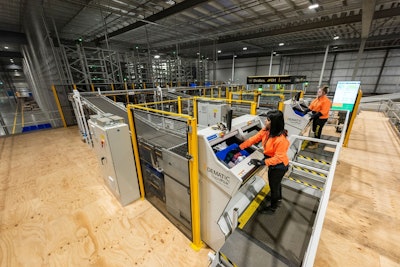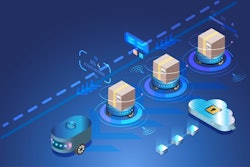
In recent years, the grocery industry has seen intense competition driven by e-commerce growth, changing consumer behavior, and a rise in discount grocery stores. Many grocers are fighting to retain loyal customers by offering personalized shopping, easy-to-use apps, and discounts. One subset of these loyal customers is omnichannel shoppers — consumers who shop in-store, online, and on mobile.
Who is the omnichannel shopper?
Nearly 57% of all households in the United States will be omnichannel shoppers by 2025. With this group spending 1.5 times more than single-channel shoppers, it’s not hard to understand why omnichannel shoppers are essential to the grocery business.
These tech-savvy consumers expect grocers like you to offer user-friendly mobile apps with features like online ordering, in-store pickup, and personalized shopping lists. They also research products online before going to the store or making a purchase. This demographic values convenience and flexibility with delivery and pick-up options and is price-conscious amid rising costs.
Because omnichannel shoppers engage more frequently and through multiple channels, they have a higher lifetime value. Consequently, you should assess your current logistics approach so you can better cater to these valuable shoppers and grow profits.
Modernizing grocery fulfillment solutions
The rise of omnichannel shopping presents grocers with the opportunity to reimagine their operations from the ground up. One of the most important foundational elements to assess is the automation within distribution centers (DCs). As a grocer, you should ask yourself the following questions:
· Which (if any) areas of your distribution center are automated, and is there an opportunity to expand to other areas?
· Does your software provide visibility and transparency into operational performance?
· How effectively does your current solution integrate with other systems?
· What level of scalability does your warehouse management software offer to accommodate fluctuations in demand and business growth?
· Does your current solution provide real-time tracking and traceability of inventory throughout the supply chain?
If your response was no to most of the above, it would be beneficial to take a closer look at automated solutions.
Streamline your success with software
Transparency and connectivity are vital when your fulfillment is split between in-store and online orders. A critical piece of the automation puzzle is software, which can streamline this process by connecting both your store and DC operations into one comprehensive ecosystem. Software also generates data that can unlock valuable insights, including:
· Enhanced inventory visibility across all channels prevents overstocking or understocking products, which maximizes revenue opportunities and minimizes carrying costs.
· Coordination between in-store and DC teams to ensure smooth order fulfillment and timely delivery.
· Future demand predictions to ensure omnichannel shoppers find what they need when they need it.
This data is important when helping to manage inventory for omnichannel fulfillment. According to data from 84.51°, eight in 10 respondents say that order accuracy and availability are important when shopping online. Having a system that provides visibility into inventory allows you to make informed decisions about your supply chain and order management.
Transforming grocery operations with automated solutions
Software can provide myriad benefits, but its seamless integration with automation is critical for effectively leveraging these advantages in your operations. Properly implemented automated solutions play a pivotal role in:
· Improving order accuracy and handling SKU proliferation, especially as the number of existing and new products continues to grow.
· Meeting large and immediate in-store and online order fulfillment demands.
· Addressing labor challenges leading to scarcity, high turnover, and increased costs.
· Maintaining display quality and preventing damaged products.
· Fulfilling smaller and more frequent deliveries.
· Streamlining last-mile delivery and distribution operations.
The most successful automated solutions seamlessly integrate software and automation. For example:
· Mixed case fulfillment. To meet the demands of omnichannel shoppers, maximize warehouse space, reduce labor and transportation costs, and make replenishment more efficient.
· Picking technologies. When consumers shop online, grocers are responsible for picking. Consider the following options for improving safety, efficiency, and accuracy in the picking process:
o Voice-directed picking. Operators use voice terminals and headsets to perform highly efficient and accurate picks without looking down.
o Vision-directed picking. Operators use smart glasses or heads-up displays (HUDs) that overlay picking instructions so they can read the instructions and perform picks at the same time.
o Goods-to-person picking. The system brings the items to the operators for them to pick directly into the delivery container. This is ideal for high-volume environments, such as grocery fulfillment, as it eliminates travel time for operators.
As a grocer navigating an extremely competitive market, it’s critical for you to invest in the customers who shop in multiple ways — whether it’s in-store, online, or via mobile apps. Prioritizing omnichannel shoppers and investing in automated solutions can protect and build razor-thin profit margins. Embracing innovative technologies that facilitate this omnichannel approach will be instrumental in navigating the evolving landscape of the grocery industry.




















